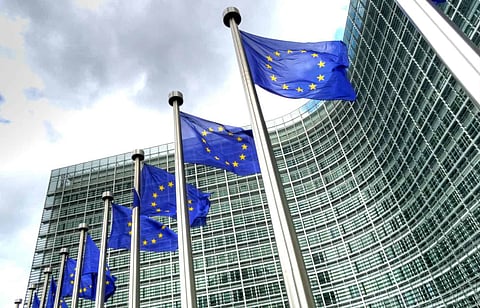

Artificial intelligence can transform numerous regions of industry and society. For some businesses, investments in AI can increase competitiveness and decrease costs, yet they can likewise uncover vulnerabilities. All things considered, these technologies have been both commended and criticised. However you see it, there is no uncertainty that regulation and oversight tools should be created. In Europe and Norway, this activity is being driven by the EU which in the course of recent years has undertaken significant administrative and policy work to evaluate how AI should be handled. In spite of the fact that the final results are a long way from done, it is worth considering the measures that have been taken and what lies ahead.
On 12 February 2019, the European Parliament adopted a Resolution on a thorough European industrial strategy on artificial intelligence (AI) and robotics. In the wake of describing AI as "one of the vital technologies of the 21st century," the European Parliament presented a few proposals to the Member States. This resolution underlines the need to close the European gap with North America and Asia-Pacific, and puts forward an organized methodology at the European level "to have the option to contend with the huge investments made by third nations, particularly the US and China".
Europe is quite behind in private investments in AI, with €2.4 to €3.2 billion out of 2016, rather than €6.5 to €9.7 billion in Asia-Pacific and €12.1 to €18.6 billion in North America. To overcome this challenge, the European Parliament builds up a general methodology based on a key regulatory environment for AI and empowers solid user protections.
By embracing this Motion, the Parliament recognizes the potential of AI and robotics technology in healthcare and all the more especially with respect to the advancement of customized drug, medicinal services technology as well as improving the quality of life and cultivating inventive procedures in the medical field. The Commission and Council will presently consider the Motion embraced in Plenary. After careful assessment, the Commission may choose to follow up on it.
The Motion so adopted focuses on the following points
• Recognizes that AI, machine learning, exponential leaps in data accessibility and cloud computing fuel research initiatives to manage the improvement of medical treatments and break down data streams to distinguish health dangers, foresee infection episodes and guide patients.
• Data mining and navigation systems can be utilized to distinguish care gaps, dangers, patterns and trends.
• When AI is integrated with the human diagnosis the blunder rate will, in general, be altogether lower than when with diagnosis by human doctors alone.
• Advances the commitment of AI and robotics to innovative preventive, clinical and restoration practices and methods in the health sector, with specific reference to the advantages they have for patients with incapacities.
• Approaches the Commission to take a shot at methodologies and strategies that can position the EU as a world pioneer in the developing field of healthcare technology
• Citizens are worried about not knowing when AI is being utilized and what data will be processed and, in this manner, prescribes that there is a clear revelation when AI is utilized.
Two points on which the Parliament is concerned are humankind and ethics, to which the Resolution gives a whole chapter. It firmly advocates "a human-driven technology," which would keep away from potential misuses of AI technologies to the hindrance of fundamental rights. All through the Resolution, the European Parliament demands the predominance of human over computer frameworks, which depends on the 'man operates machine' guideline of responsibility and prescribes that "people should consistently be ultimately in charge of decision making.
The European Parliament approaches the European Commission to chip away at the improvement of a solid EU authority and to guarantee intelligent national-level strategies.
Following this Resolution, on 8 April 2019, the European Commission launched a pilot phase in perspective on implementing ethical guidelines. Such phase is a part of the AI strategy introduced by the European Commission in April 2018, which targets increasing public and private investments in the part of AI, with the goal of coming to €20 million every year throughout the next ten years. From that point forward, the European Commission has kept advancing the development of a European methodology on AI: An European approach on AI will help the European Union's competitiveness and guarantee trust based on European values.
This is obviously an area which is under continuous development with the forms of an increasingly uniform administrative methodology ending up logically clear. It is additionally an area of interest for other global organisations. The Council of Europe is creating strategies and modernizing lawful frameworks to address the legal challenges that emerge with this new innovation. While on 22 May 2019, 42 nations, including Norway, embraced OECD standards on AI, which, all things considered, echo the system created by the EU. A strong update that International convergence and comity will be critical to ensure powerful regulation of an innovation that is naturally inclined not to perceive borders.
Join our WhatsApp Channel to get the latest news, exclusives and videos on WhatsApp
_____________
Disclaimer: Analytics Insight does not provide financial advice or guidance. Also note that the cryptocurrencies mentioned/listed on the website could potentially be scams, i.e. designed to induce you to invest financial resources that may be lost forever and not be recoverable once investments are made. You are responsible for conducting your own research (DYOR) before making any investments. Read more here.
